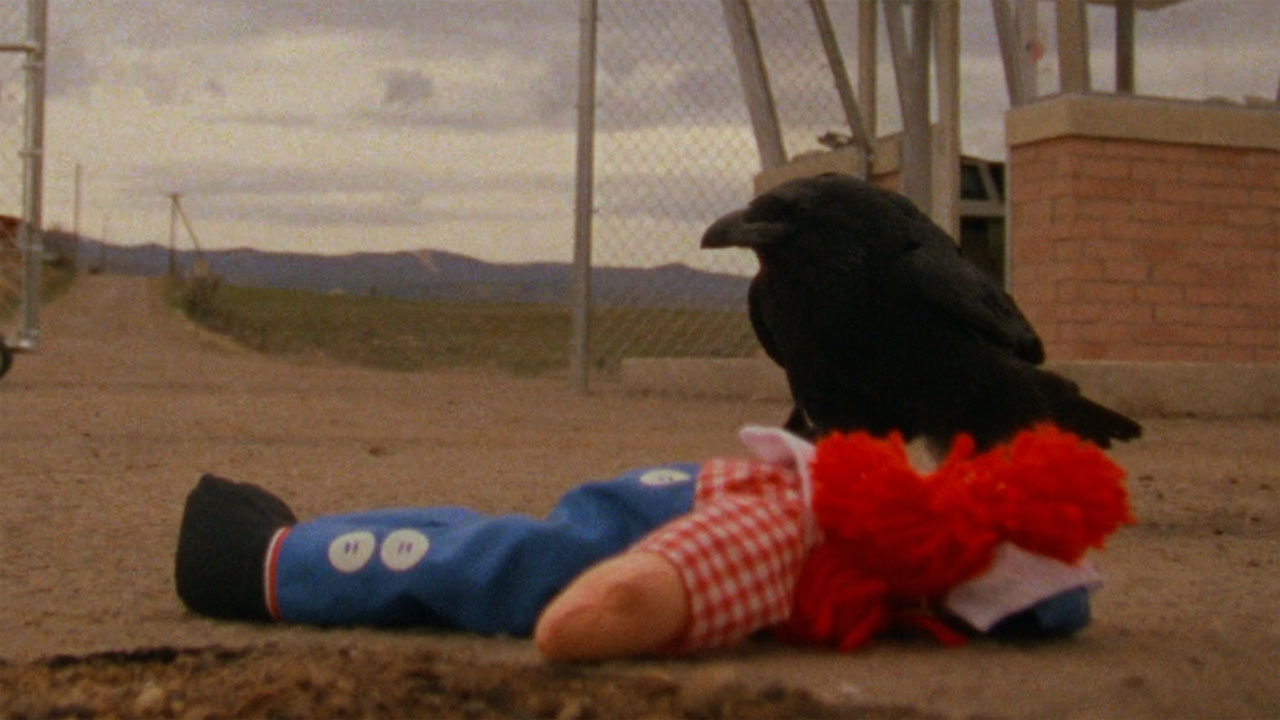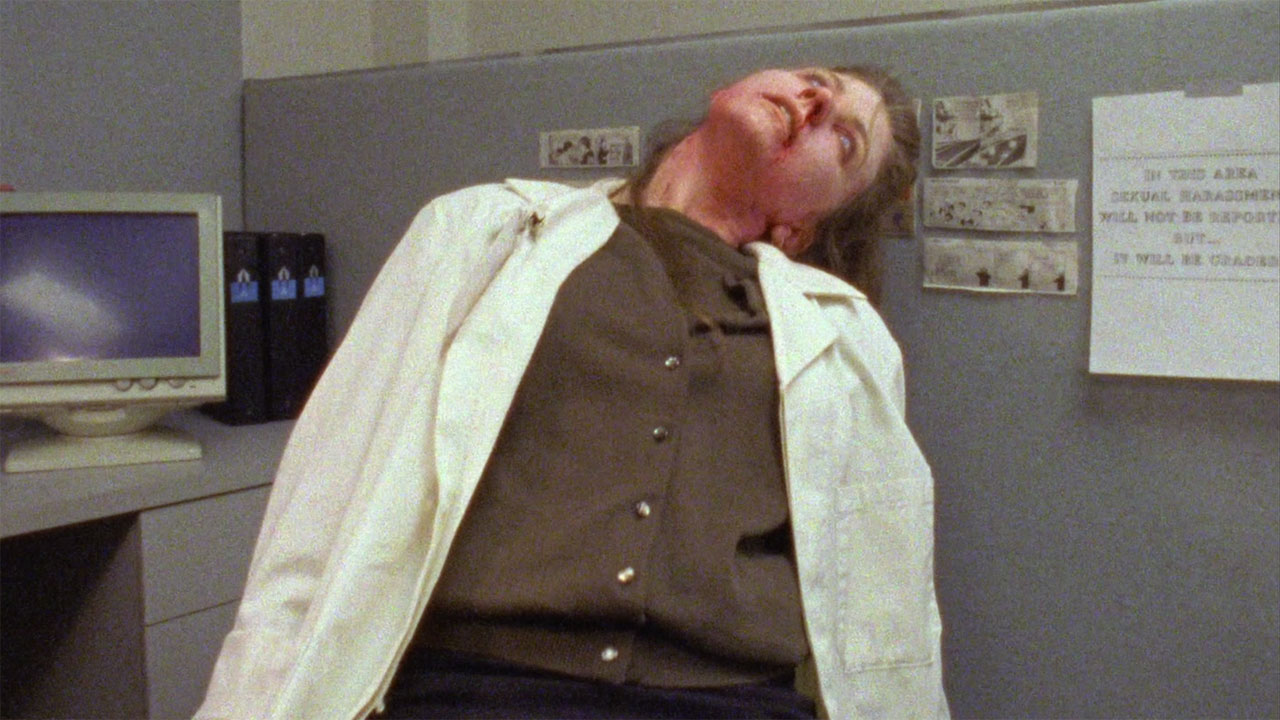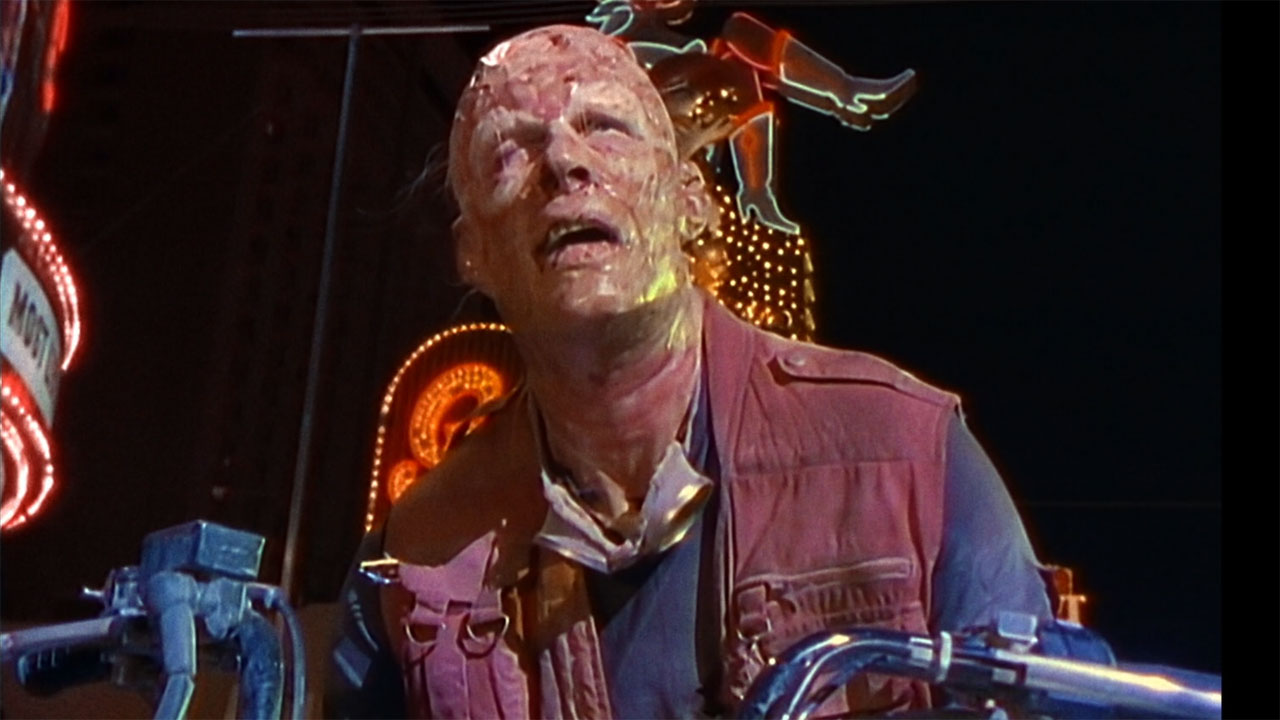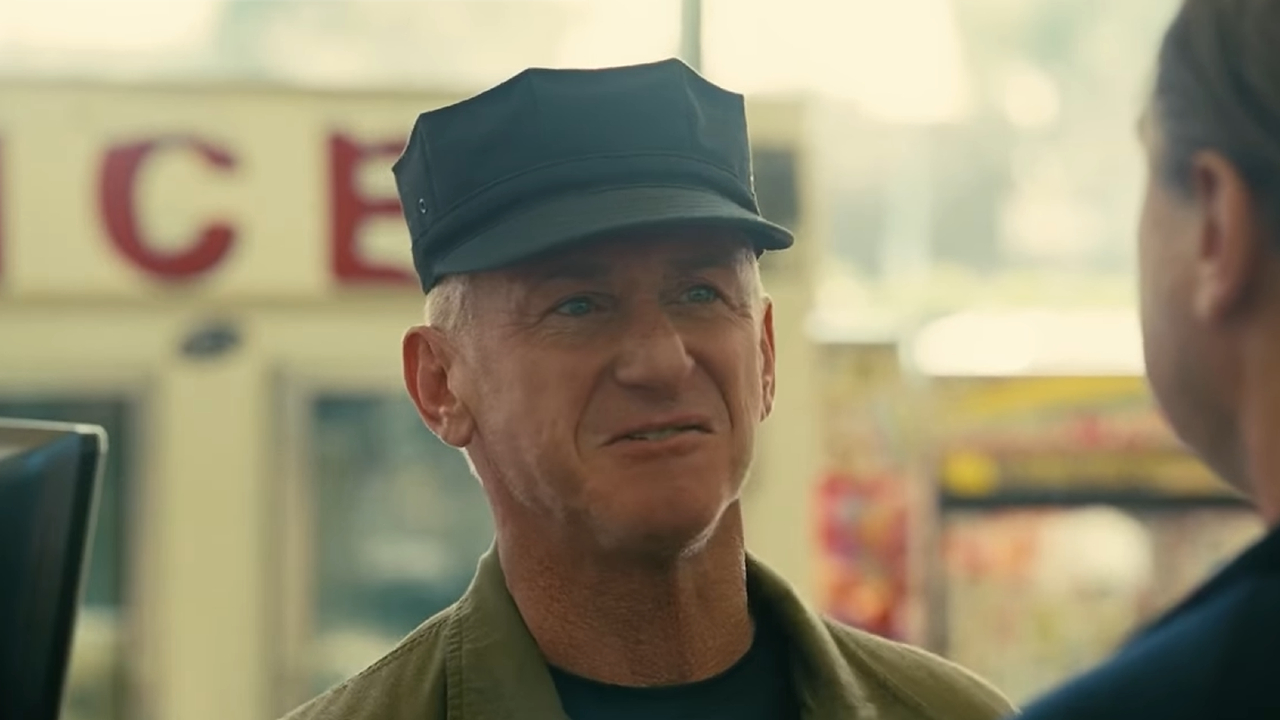Adapting Stephen King's The Stand: A 1994 Miniseries Pulls Off The Impossible
Taking a look back at the first adaptation of the pandemic epic.

By 1994, a total of 26 Stephen King adaptations had been produced in the span of 18 years, proving the extreme viability of the author’s work in film and television… but one book continued to prove a stubborn exception. The Stand was the fourth novel that King had published, hardcovers first hitting stores in October 1978, and while it was a massive hit that helped solidify the writer’s growing clout, it was also material that Hollywood kept roasting in development hell for years, earning it a reputation as being impossible to adapt.
Like a number of other Stephen King movies, the journey began with George A. Romero at the helm. As I noted in my column about 1982’s Creepshow, that particular horror anthology film was created in part because Romero and King wanted to earn a strong enough reputation so that they could make a big screen version of The Stand with both substantial resources and creative control. But while Creepshow was indeed a hit, it still didn’t provide them with the acceleration needed to get the beloved pandemic epic off the ground.
Stephen King penned many different drafts of the screenplay for the potential feature, trying to trim and cut the material where possible, but still it proved too massive for the medium. An approach was devised to try a two-film adaptation – the first titled The Plague, and the second titled The Stand – but the idea was before its time. The dream of bringing the novel to the big screen was ostensibly killed.
It was in 1990 with the airing of Tommy Lee Wallace’s IT that everything changed, however. While Stephen King maintained concerns about content censorship on network television and the disruptive nature of commercial breaks, he was impressed by the miniseries’ ability to capture the full scope of his incredibly long book. Reteaming with director Mick Garris, with whom he had worked on his first ever original film, Sleepwalkers (a project not covered in this column because it’s not an adaptation), King began scripting would become 1994’s small screen version of The Stand – which, as you may have picked up by this point, is the focus of this week’s Adapting Stephen King.

What The Stand Is About
The Stand proved to be a headache to adapt once it was completed and in print, but to be fair, it was a headache before that as well. The book was not only a struggle for Stephen King to produce creatively – he took to referring it as “my own little Vietnam” while in the process of writing it – but it also led to serious conflicts in his relationship with his publisher at the time, Doubleday.
As described by Stephen King, The Stand was the result of three disparate ideas that found haven together in his brain. The journey began in the mid-1970s when the author and his family lived in Colorado, and the writer began reading about Patty Hearst – the granddaughter of publishing magnate William Randolph Hearst, who saw famously kidnapped by the Symbionese Liberation Army and ended up joining their cause. To paraphrase King from the commentary track on the miniseries’ Blu-ray, he was struck by the idea of strong evil overcoming weak good.
The second ingredient came from randomly flipping around the radio dial. By pure coincidence he landed on a station broadcasting a minister delivering a fire-and-brimstone sermon, and one line in particular stuck in his mind: “Once in every generation a plague shall fall among them.” He ended up tacking this phrase right above his typewriter (bit of trivia: while it’s not a direct line in the finished book, King did use that line in dialogue in the adaptation).
Your Daily Blend of Entertainment News
Lastly, there was what’s referred to as the "Dugway sheep incident." In 1968, testing of a chemical weapon at the United States Army-controlled Dugway Proving Ground in Utah resulted in approximately 6,000 sheep on neighboring farms being poisoned and killed. King read that a simple change in wind direction could have resulted in the toxic cloud blowing to Salt Lake City, and had that happened the results would have been catastrophic.
Combined with Stephen King’s greater aspirations to create a Lord of the Rings-style fantasy epic with America as the backdrop, The Stand began to flow.
It didn’t always flow easy. Hundreds of pages in, King found that his characters were recovering from the plague and starting to rebuild familiar modern life, and it was becoming a story he wasn’t particularly interested in telling. He considered giving up on the idea, and spent weeks going on walks to overcome blocks – but coming to the realization that he needed another element of massive destruction, namely a bomb, put him back on the right path.
The manuscript that Stephen King turned in to Doubleday was a monster, stacked like a skyscraper at about 1,200 pages… and the publisher didn’t exactly appreciate it. According to their accounting department, production costs wouldn’t allow the printing of a book so ridiculously massive, and as a result King was forced to cut approximately 400 pages (the “Complete and Uncut Edition” of the book was eventually published in 1990). It all but ended his relationship with Doubleday – though I already told the rest of that story in my column about Mary Lambert’s Pet Sematary.
With deep themes about the dangerous path of modernity and technology, not to mention human nature, The Stand begins with a mistake, as a biological weapon is unleashed at an army base and a hapless soldier named Charles "Charlie" Campion abandons his post. His hope is that he and his family can outrun the outrageously deadly super flu that has been cooked up in the lab, but what he doesn’t know is that he is already too late and inadvertently winds up spreading the virus across America.
The pandemic – which goes by the name Captain Trips, among others – wipes out most of the populations on Earth, but there are those that have what seems like a miraculous immunity. As unrelated characters like Stu Redman, Fran Goldsmith, Larry Underwood, Harold Lauder, Glen Bateman, Nick Andros, Tom Cullen, Lloyd Henreid, Donald Merwin Elbert, and others try to figure out how to survive in the post-apocalyptic world, they nightly experience dreams that border on visions.
One of these psychic events sees characters connecting with Mother Abigail Fremantle – a 108 year-old-woman who beckons people to come to her in Hemingford Home, Nebraska so that a new, peaceful society may start to form. The other dreams, however, are devilish visits from The Dark Man a.k.a. The walkin’ Dude a.k.a. Randall Flagg – who operates as a cult leader gathering a contingent of the war-hungry in Las Vegas, with the ultimate goal being to wipe out anyone who doesn’t kiss the evil, levitating sorcerer’s ring.

How Mick Garris’ The Stand Differs From The Book
Stephen King exhibited a great deal of patience and restraint in the adaptation process of The Stand, very much taking a “do it right, or don’t do it at all” mentality – and the exhibited virtue paid off. Though he didn’t get the chance to bring the epic to the big screen, he was able to write and executive produce what is an immensely faithful live-action version that very much is the book.
Certain alterations were necessary with the new medium, including some notable cuts – and it should be noted that the trimming process was aided by the fact that King based his script on the shorter version of the book. While the aforementioned “Complete and Uncut Edition” of The Stand was officially released four years prior to the adaptation, the extra material – such as Trashcan Man’s horrific journey with the sadistic rapist known only as The Kid – wasn’t a part of the plan as the screenplay was coming together (let’s also be real: that content was never going to fly on ‘90s network television anyway).
On that note, there is a lot of graphic content in The Stand that was deemed unsuitable even with the production airing after 9pm with a parental guidance warning. In fact, Mick Garris and Stephen King had to actually fight the standards and practices people just to show dead bodies with their eyes open. The corpses are far less gruesome than King describes in the book (there’s no evidence of the horrific “tube neck” that is described from the deadly influenza bug), and the violent standoff in the desert that introduces Dayna Jurgens (Kellie Overbey) is wholly axed. Censorship additionally seems like a very reasonable explanation as to why Nick Andros (Rob Lowe) doesn’t wind up losing an eye early in his post-apocalyptic journey.
As far as all the main characters go, most are represented exactly as they appear on the page, but there are some changes. Most of these are minor: Harold Lauder (Corin Nemec) doesn’t start the story as an obese teen constantly munching on Payday bars; and Randall Flagg (Jamey Sheridan) doesn’t levitate, but he can turn into a raven and fly. The most significant deviations from the text involve Nadine Cross (Laura San Giacomo) and Fran Goldsmith (Molly Ringwald).
The former sees her storyline combined with that of Rita Blakemoor, a pill popping socialite who Larry Underwood (Adam Storke) meets in New York City, but who commits suicide shortly after they get into New Jersey. The latter isn’t revealed as being pregnant until halfway through the miniseries, and it is heavily implied that Stu Redman (Gary Sinise) is the father (in the novel she is introduced as pregnant, and the father of the baby is presumed killed by Captain Trips).

Is It Worthy Of The King?
Mick Garris’ The Stand was a massive undertaking for its era. The schedule saw the project filmed across three seasons and in six different states; a double-digit number of pages were regularly shot in a single day; and it ultimately features a triple-digit number of speaking parts. The scope was so large that in order to save money, the production had to shoot on 16mm film instead of the standard 35mm, limiting the capacity of the camera.
In reflection, this leaves the 1994 miniseries in a strange middle place. On the one hand, it really is an undisputedly impressive effort: it features a spectacular ensemble cast filled with awesome talent during a time when the small screen was still looked down on compared to film, and it successfully pushed the boundaries of content on network television in a massive way. For all of its excellent production value, however, it’s also undisputable that it has the permanent look and feel of a TV movie – leaving it to not age terribly well in the HD age.
Stephen King’s script is a phenomenal piece of work. He was concerned about compression and censorship, but The Stand miniseries is a streamlined adaptation that properly conveys the expanse and themes of the story, and gets the characters right.
As well-drawn as the protagonists and antagonists are in the script, though, there are performances that leave a lot to be desired. Gary Sinise’s Stu Redman, Miguel Ferrer’s Lloyd Henreid, Matt Frewer’s Trashcan Man, and Bill Fagerbakke’s Tom Cullen are all pitch perfect incarnations of their respective roles, but Jamey Sheridan simply doesn’t have the on screen presence required for the part of Randall Flagg, and Laura San Giacomo’s Nadine Cross is all over the map emotionally, never grounding the character in a proper and necessary way.
An ideal remake of The Stand in my mind would be done by taking the script that Stephen King wrote, put a modern polish on it, and film it with the resources that the epic deserved. That ended up definitely not being the approach taken by the new adaptation that first started its limited run streaming December 2020… but you’ll just have to wait until this chronologically ordered column hits that title for a deeper analysis (you’ll be able to find it here on CinemaBlend on December 28, 2022).

How To Watch Mick Garris’ The Stand
For reasons that aren’t immediately clear, watching Mick Garris’ The Stand isn’t the easiest endeavor – specifically if you’re aiming to watch it in HD. The first ever Blu-ray version of the film was released in 2019 and it’s a fantastic restoration that also comes with the previously mentioned commentary track, and a quick featurette. That edition is widely available, but finding a digital version is much trickier. It’s not available to stream currently on any of the major streaming services, and the only way to purchase it is on Vudu, which hosts an SD version exclusively.
Next week’s Adapting Stephen King is going to be a real treat, as it will be time to explore what stands as one of the greatest King films of all time: Frank Darabont’s The Shawshank Redemption. It will be an epic dive into a beloved movie, so look for it here on CinemaBlend on Wednesday. In the meantime, you can explore previous installments of this column by clicking through the banners below!







Eric Eisenberg is the Assistant Managing Editor at CinemaBlend. After graduating Boston University and earning a bachelor’s degree in journalism, he took a part-time job as a staff writer for CinemaBlend, and after six months was offered the opportunity to move to Los Angeles and take on a newly created West Coast Editor position. Over a decade later, he's continuing to advance his interests and expertise. In addition to conducting filmmaker interviews and contributing to the news and feature content of the site, Eric also oversees the Movie Reviews section, writes the the weekend box office report (published Sundays), and is the site's resident Stephen King expert. He has two King-related columns.
